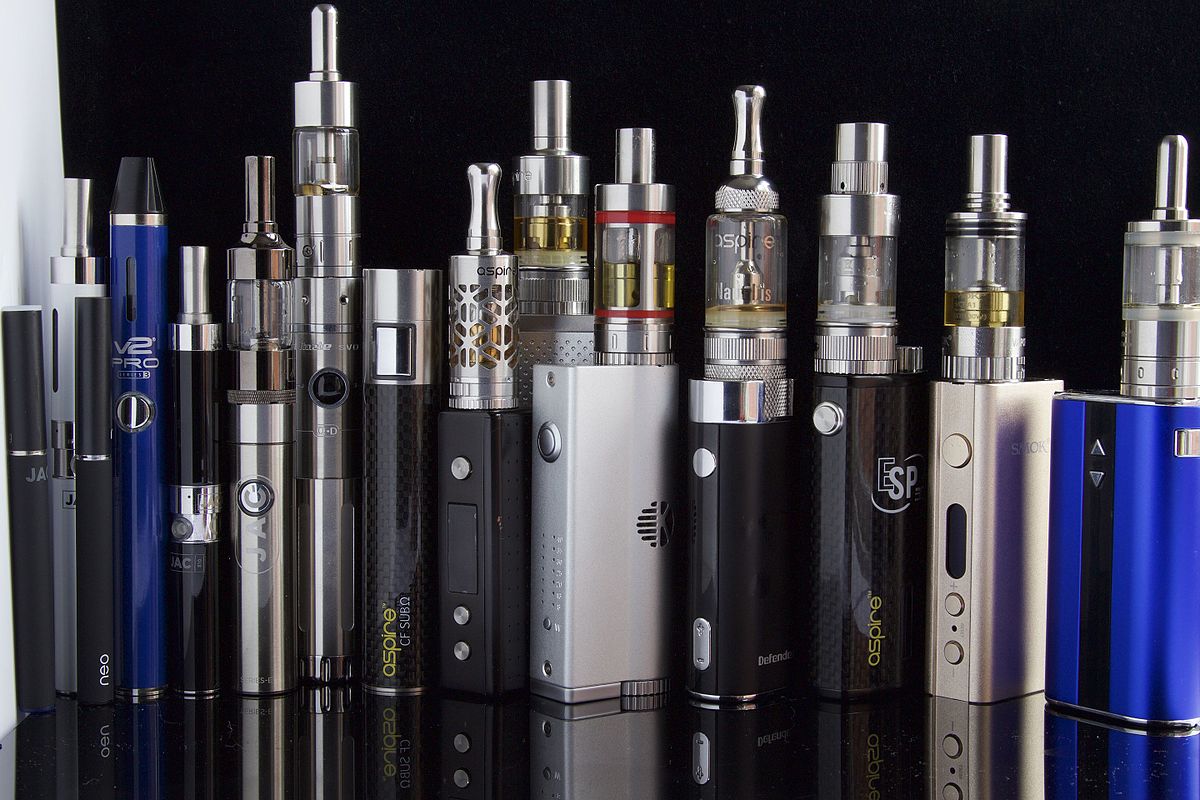by Vlada Rauner, satff writer
On Monday, November 6th, Mrs. Mckinley, the principal of RHHS, sent out a newsletter discussing events that the school and student body would be having during the month of November. Among these many events, a section of the newsletter was dedicated to addressing the increased student use of tobacco products. The most popular form of tobacco product among high school students and young adults are vaporizers.
These devices were created as a safer alternative to cigarettes that contain thousands of cancer-causing chemicals. Vaporizers were originally used by heavy smokers to help them quit and add years to their lives. Without all the extra carcinogens than cigarettes are made with, using vaporizers have been proven to benefit the overall health of heavy smokers and prolong life expectancy.
These e-cigarette devices are relatively new to the tobacco industry, and they do not burn tobacco products in traditional ways. Instead of a solid substance like tobacco, e-liquids are simply vaporized. The e-liquids can also have different levels of nicotine so the user can get their desired dosage.
They come in many shapes and sizes and can contain different substances. The most widely used have a long cylindrical shape, with a replaceable inhaler cartridge containing vegetable glycerin and/or polyethylene glycol, flavoring and nicotine.These e-liquids or ‘juice’ come in a variety of flavors from Bubble Gum to Good Cookie and Unicorn Milk.
In 2015, Public Health England announced that studies done by an expert independent evidence review concluded that “e-cigarettes are significantly less harmful to health than tobacco and have the potential to help smokers quit smoking” as well as “contribute to the falling of smoking rates among adults and young people.”
However, despite the benefits, vaping does have health risks. Vaping heavily has been tied to high levels of formaldehyde, and a disease known as popcorn lung. The chemical in the flavored liquid called Diacetyl “is a well-known harmful chemical, which, among other things, causes a lung disease called ‘popcorn lung,'” says Erika Sward, assistant vice president for national advocacy at the American Lung Association.
So, why do students think it’s okay or even beneficial to use these products? Is it peer pressure or something larger? An anonymous student states that the reason they started vaping was very simple. “I got one for a cheap price and I use the non-nicotine juice in it. I admit it makes you look cool… but nowadays people don’t really care if you smoke anything or not. It’s more for the flavor and social side of it.”
The River Hill student body has a broad view on vaping. Viewpoints range from
“Most of my friends do other stuff, and I’m not really into it, so I vape instead” and “I don’t really care of they vape or not as long as they don’t push it on me,” to an opposing view of, “People just do it to look cool, and it’s honestly a waste of money,” and, “They really don’t know the risks they’re taking.” Either way, vaping and E-cigarettes are a prominent subject amongst teens.
For students, e-cigarette devices are seen as a loophole to the public schools’ tobacco policy (1050) that prohibits the use, sale, or possession of any tobacco products on school grounds.
McKinley continues to warn students that such products are not allowed at “any time before, during, or after school as well as at any school event, trip, bus, or after-school activity.”
She also mentioned the code of conduct that states consequences for disregarding the policy. Any tobacco products on school property will result in “loss of privileges, removal from extracurricular activities, detention or in-school suspension.” Mckinley explains.
It is clear that the draw to e-cigarettes and vaporizers among young people isn’t going to stop. Young adults and teens who are using these devices are often misled when it comes to the health risks that are closer with every drag they take. McKinley reminded parents that they need to take initiative as well by writing, “Please remind your teen about safe behaviors expected from student(s).”
This November letter is more of a warning than a reminder. Students need to think about the value in separating education from recreation. What students do in their free time can have just as much impact on their future as what they do in the classroom.

